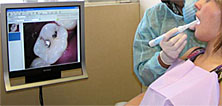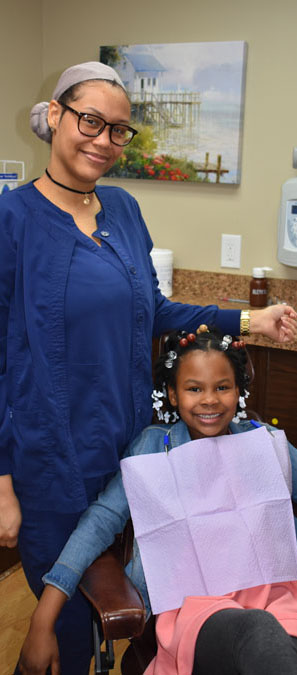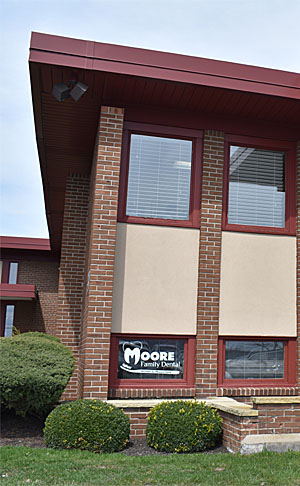 A trip to the dentist means spending time reclining in a chair, mouth open, while the dentist and dental hygienists work. They clean your teeth, diagnose problems, fill cavities, and work to improve your oral health. As the patient, you have traditionally had a very limited idea of exactly what is going on. With Moore Family Dental, though, patients can see what is going on for themselves.
A trip to the dentist means spending time reclining in a chair, mouth open, while the dentist and dental hygienists work. They clean your teeth, diagnose problems, fill cavities, and work to improve your oral health. As the patient, you have traditionally had a very limited idea of exactly what is going on. With Moore Family Dental, though, patients can see what is going on for themselves.
Moore Family Dental is committed to using the latest technology for the benefit of patients. Intraoral Camera technology is one example of that; it allows patients to see what the dentist is seeing. The dentist uses a wand with a camera on the end of it to take pictures inside the patient’s mouth. The wand is shaped like a pen and it provides a non-invasive way for the dentist to capture images of the patient’s teeth and gums. Similar to a thermometer in a doctor’s office, the wand has a disposable sleeve on it; the sleeve is discarded after the camera is used so that there is no chance of contamination from one patient to another.
The images appear on a conveniently positioned display monitor so the dentist and patient can look at them together. This makes for a great teaching device; the dentist can explain exactly what the patient is seeing and the patient can ask questions about what appears on the screen. The dentist can provide the patient with a very personalized course on oral hygiene. A picture that shows material between the teeth can illustrate the need for better flossing; if the teeth and gums are in remarkable condition, the dentist can congratulate the patient on the direct and very obvious benefits of good oral hygiene. Showing toddlers the exact site of a cavity while explaining the procedure for filling it can give the child a better appreciation for good oral hygiene as well as what to expect during their next visit.
An Intraoral Camera is a tremendously useful tool for a dentist. It provides an excellent way to focus on particular areas of the mouth; with the Intraoral Camera, the dentist can even zoom in on a particular tooth. This can be helpful in many ways. For example, if a dentist is monitoring the progress of a specific treatment, the camera can provide a unique way to do that. The dentist can capture an image of the tooth in question at each appointment and compare them; this provides the dentist with a concrete way to determine whether there is improvement or lack thereof over time.
This technology does not rely on radiation, and in some cases can eliminate the need for X-rays. If the dentist identifies a problem with the Intraoral Camera, X-rays might not be necessary for certain diagnoses.
Finally, Intraoral Cameras provide incontrovertible proof of what is going on in a patient’s mouth. This can be very useful when an insurance company requires proof of a particular condition before authorizing payment. Similarly, if a dentist refers a patient to a specialist, images acquired through Intraoral Camera technology can help the other dental care professional zero in on the problem more quickly and easily.



